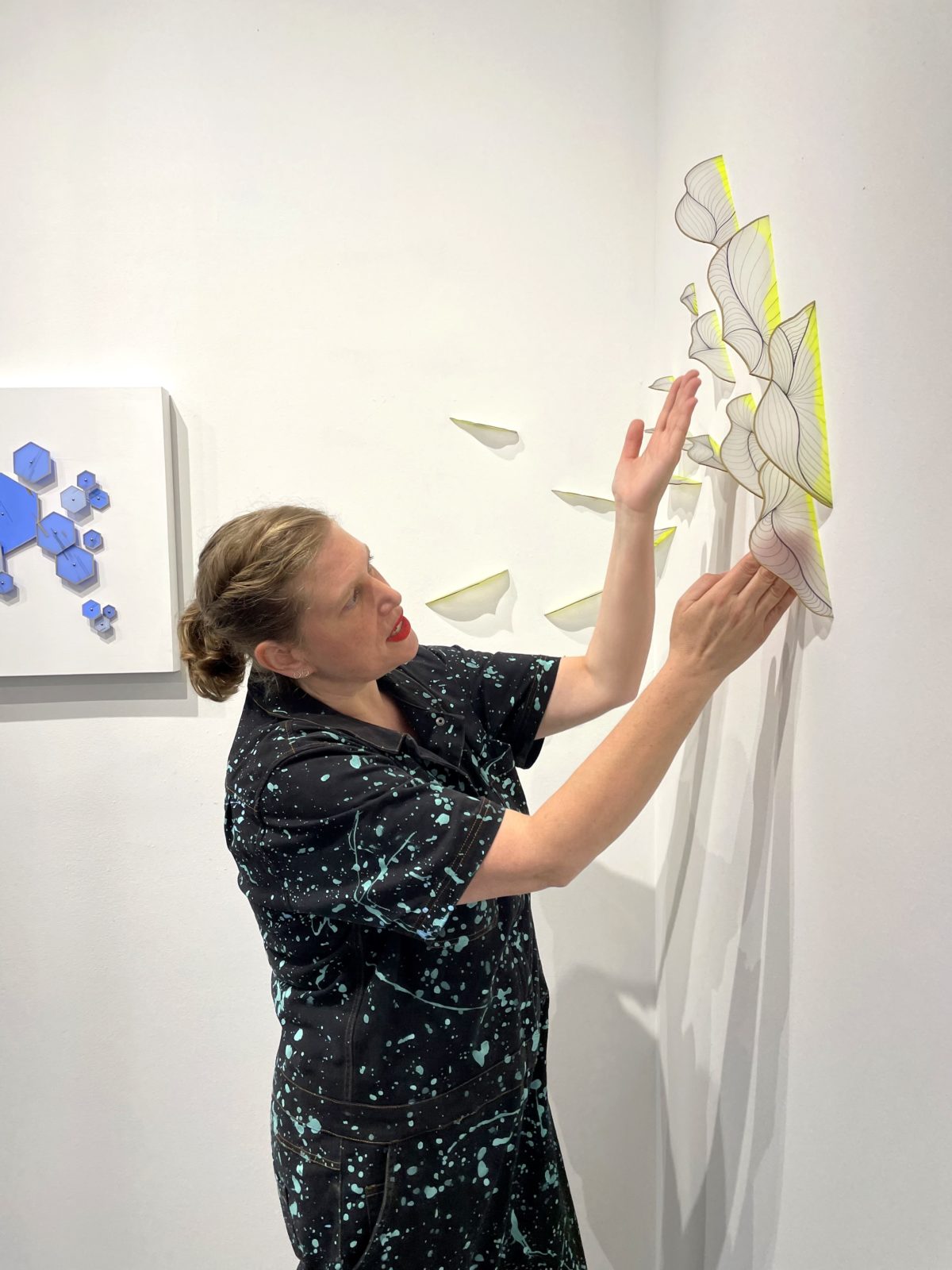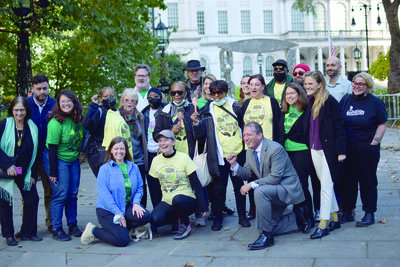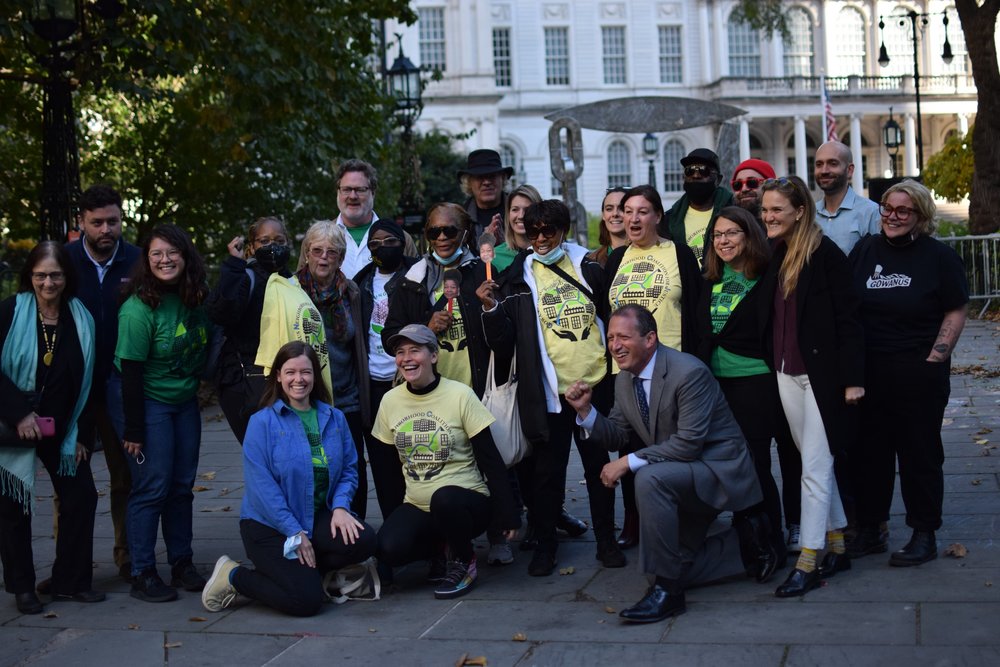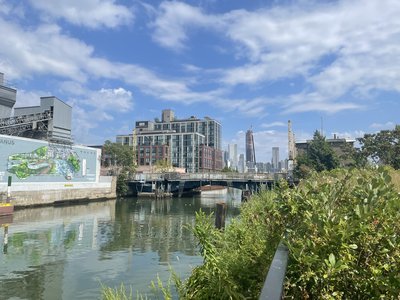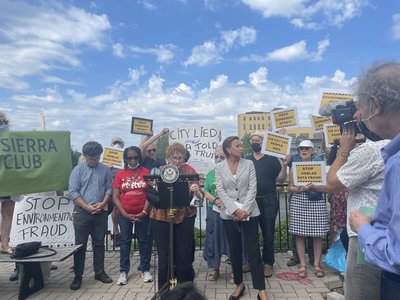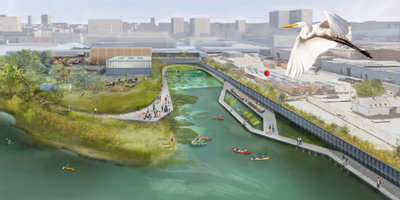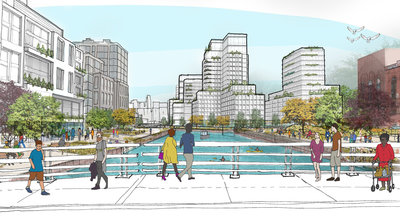Arts Gowanus hosts 26th annual Gowanus Open Studios
By Stephanie Meditz
news@queensledger.com
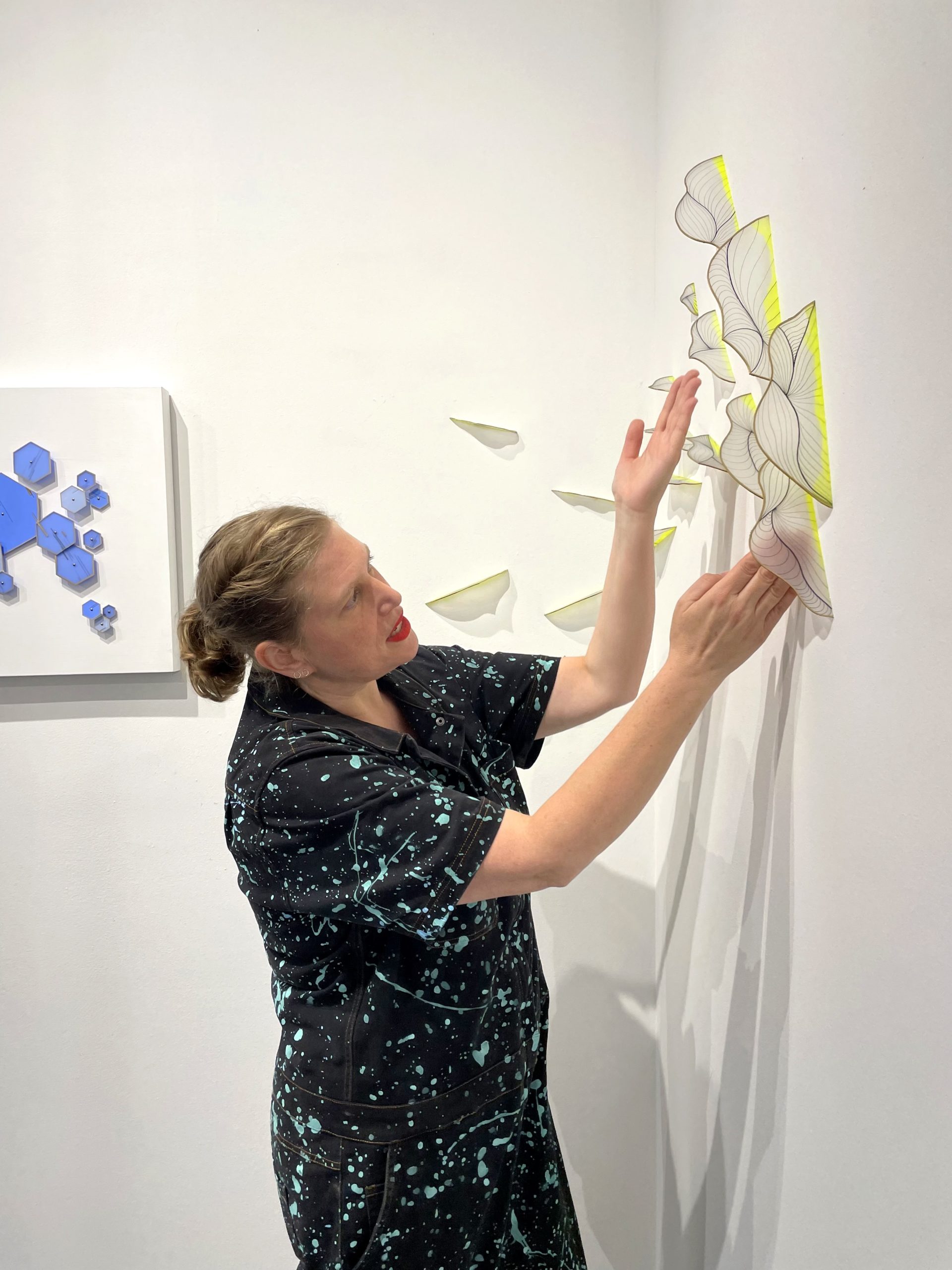
Natale Adgnot’s unique sculptures protrude from her studio walls.
This weekend, Gowanus artists will open their studio doors to the public, art connoisseurs and curious minds alike.
Arts Gowanus will host its 26th annual Gowanus Open Studios on Oct. 15 and 16 from 12 p.m. to 6 p.m., where artists in the community will allow their neighbors to see them in their creative element.
The first GOS took place 27 years ago when a small group of artists opened their workspaces to the public.
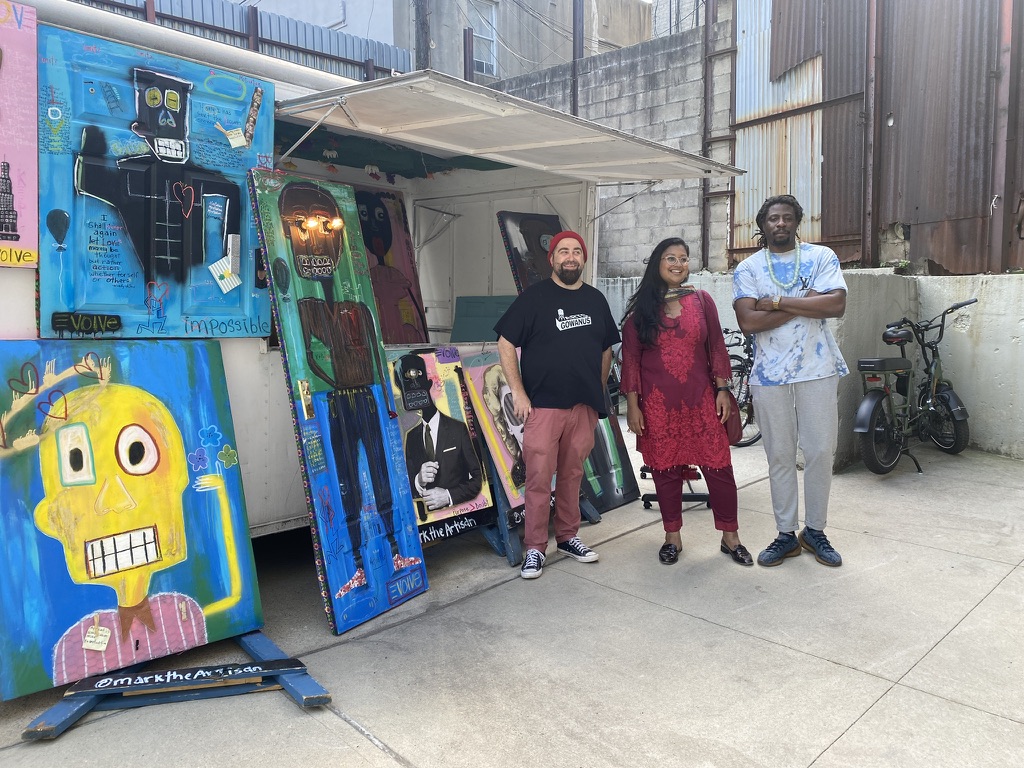
Johnny Thornton, Councilwoman Shahana Hanif and MarktheArtisan attended GOS in 2021.
This year, more than 350 artists in 100 locations will participate in the event.
“It started out very small and over the years it has just become, I think, Brooklyn’s biggest art celebration,” Johnny Thornton, executive director of Arts Gowanus, said. “It grows a little bit each year. More artists and more people hear about Gowanus and hear about all the amazing creative stuff that’s happening here.”
Fortunately for Brooklyn’s many bikers and pedestrians, GOS is navigable for people traveling on foot.
There are multiple studios that are walking distance from several subway stations, and some artists even have studios in the same building.
As a result of the event’s increased popularity over the years, artists look forward to participating every year and sharing their work.
“This drives itself a little bit,” Thornton said. “This is the best time of year for artists to make sales, to meet curators. A lot of art insiders come here to scope out new artists in the neighborhood. So this is really something that artists are excited about year-round…It can’t come soon enough.”
Gowanus Open Studios includes designated studio spaces for artists who have been displaced from the neighborhood.
“Rents have been going up in the neighborhood for a while. We’ve lost a couple of large studio buildings over the last decade. And so we make our best efforts to be able to include artists who either can’t afford a studio in the neighborhood or have lost their studio,” Thornton said.
These artists will have the opportunity to exhibit their work at 82 St. Marks Place, the Gowanus Dredgers Boathouse and 540 President St., the Arts Gowanus office.
Gowanus Open Studios reflects the neighborhood’s diverse range of artists, including jewelry makers, painters, printers, muralists, photographers, video artists and sculptors.
Natale Adgnot, a wall sculptor in the community, attended her first GOS in 2014.
Her work consists of acrylic and thermoplastic mounted on birch panels in a three dimensional effect.
She is currently working on a series entitled “Bird Brains” in which each piece represents a bird referenced in common English idioms.
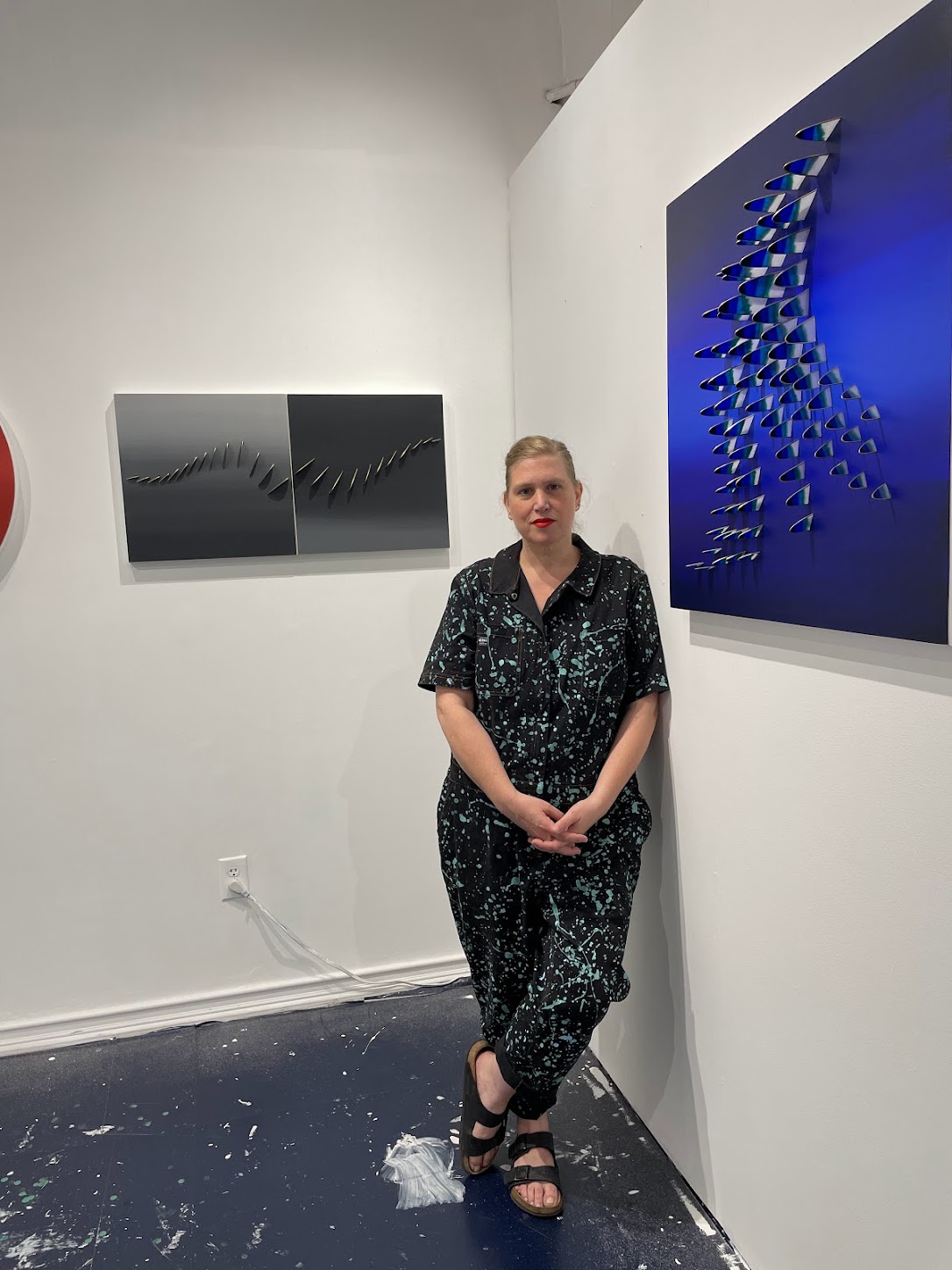
Natale Adgnot poses with one of her favorite pieces from her Bird Brains series, “Appeal to Vanity (Peacock Square)” (2022).
Each idiom is then connected to a cognitive bias or logical fallacy.
“There are so many expressions in the English language that sort of borrow a bird, and the bird stands in as a metaphor for some irrational behavior or belief that humans hold,” Adgnot said. “We humans are kind of bird brains for believing these things.”
Adgnot will showcase parts of Bird Brains at GOS this weekend at TI Art Studio #5 on the third floor at 183 Lorraine St.
“[Gowanus] is just the best place to be an artist. I lived in Japan for three years and, honestly, 75 percent of the reason we came back to New York was because I missed my art community in Gowanus,” she said. “I’m really lucky to have a studio in this neighborhood.”
In 2023, Adgnot will reveal a new installation of her work that takes her sculptures off the birch panels and mounts them directly onto walls or floors.

Adgnot’s “The Duck Test” (2022) is made from acrylic, enamel on
thermoplastic and panel.
Thornton himself is a photorealist painter, and he participates in local community projects.
On Monday, he and Arts Gowanus programming director Emily Chiavelli installed a community photo mural across the street from the Gowanus Dredgers Boathouse.
The mural features most of the artists who live and work in Gowanus, including Adgnot.
Thornton and Chiavelli will also showcase a painting and photo series in the Arts Gowanus office.
One of the goals of GOS is to make art more accessible for all, meaning that people do not need to know anything about art to attend.
“[Gowanus Open Studios] kind of takes the gallery out of it. You can see a lot of art in one day and it makes it completely accessible for the public and anyone who wants to see what’s happening in the neighborhood,” Thornton said.
Adgnot especially enjoys when children visit her studios — she lets them choose a postcard of her work to take home.
Thornton became executive director of Arts Gowanus in 2020, in the midst of both the COVID-19 pandemic and the neighborhood rezoning.
During these hard times, Arts Gowanus was dedicated to advocacy for local artists — it negotiated 30,000 square feet of affordable artists’ space inside the new developments in Gowanus.
“We want to keep this neighborhood the vibrant creative community that it’s always been. Art requires accessibility and diversity. It requires an organization looking out for the artists’ best interests in the neighborhood,” Thornton said.
All year long, Arts Gowanus helps artists secure workspaces, pair with businesses, find work opportunities and navigate the administrative aspects of being an artist.
To conclude and celebrate GOS 2022, there will be a party at the Gowanus Dredgers Boathouse at 6:30 p.m. on Oct. 16.
“It’s really just a celebration of the entire creative community in Gowanus, which is so strong and vibrant,” Thornton said.
For more information, visit https://www.artsgowanus.org.



